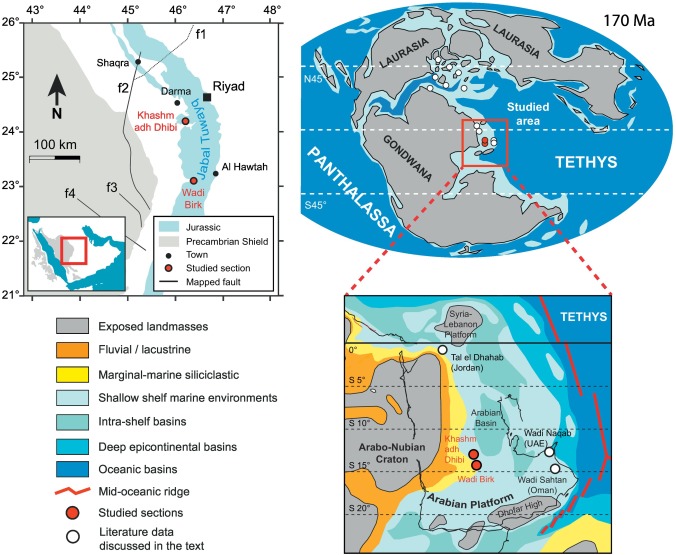[Publication] Carbon and oxygen isotope stratigraphy of Jurassic platform carbonates from Saudi Arabia: Implications for diagenesis, correlations and global paleoenvironmental changes
Major carbon cycle disturbances reflected by carbon isotope excursions (CIE) have been reported in the Jurassic successions of Euro-Boreal and Mediterranean basins. However, sedimentary and geochemical data from other domains are still required to unravel the global or regional nature of paleoenvironmental disturbances and identify the potential triggers. Here, we present biostratigraphically well-constrained (middle Toarcian to lower Kimmeridgian) bulk-rock δ13C and δ18O data from central Saudi Arabia. Five major negative δ18O excursions are identified in back-reef facies below sequence boundaries and disconformities (Aalenian-Bajocian boundary, upper Bajocian, middle Bathonian, upper Callovian and lower Kimmeridgian), suggesting that these carbonates underwent intense meteoric diagenesis during partial or major subaerial exposures of the Arabian Platform. The δ13C record is less altered and shows correlations with the regional relative sea-level changes influencing the productivity levels and inflows of fluvial (12C-enriched) or oceanic (12C-depleted) waters onto the platform. Overall, most of the δ13C variations recorded at the scale of the Arabian Platform within the lower and middle Jurassic are in agreement with NW Tethyan data. Among these variations, the increase in δ13C values recorded in the middle Toarcian, lower Bajocian, and lower Bathonian zigzag Zone indicate a considerable increase of productivity and 12Corg burial concomitant with global sea-level rises. Conversely, the occurrence of major but diachronous negative CIEs at the Aalenian-Bajocian boundary and around the lower-upper Bajocian transition are interpreted as accelerations of terrestrial 12Corg transfer to the ocean and atmosphere linked to regional but widespread emergences of landmasses. Whether global (eustatic) or regional (tectonic), all these sea-level changes and carbon transfers could be distal consequences of successive episodes of the Pangean breakup.
https://doi.org/10.1016/j.palaeo.2018.09.005


